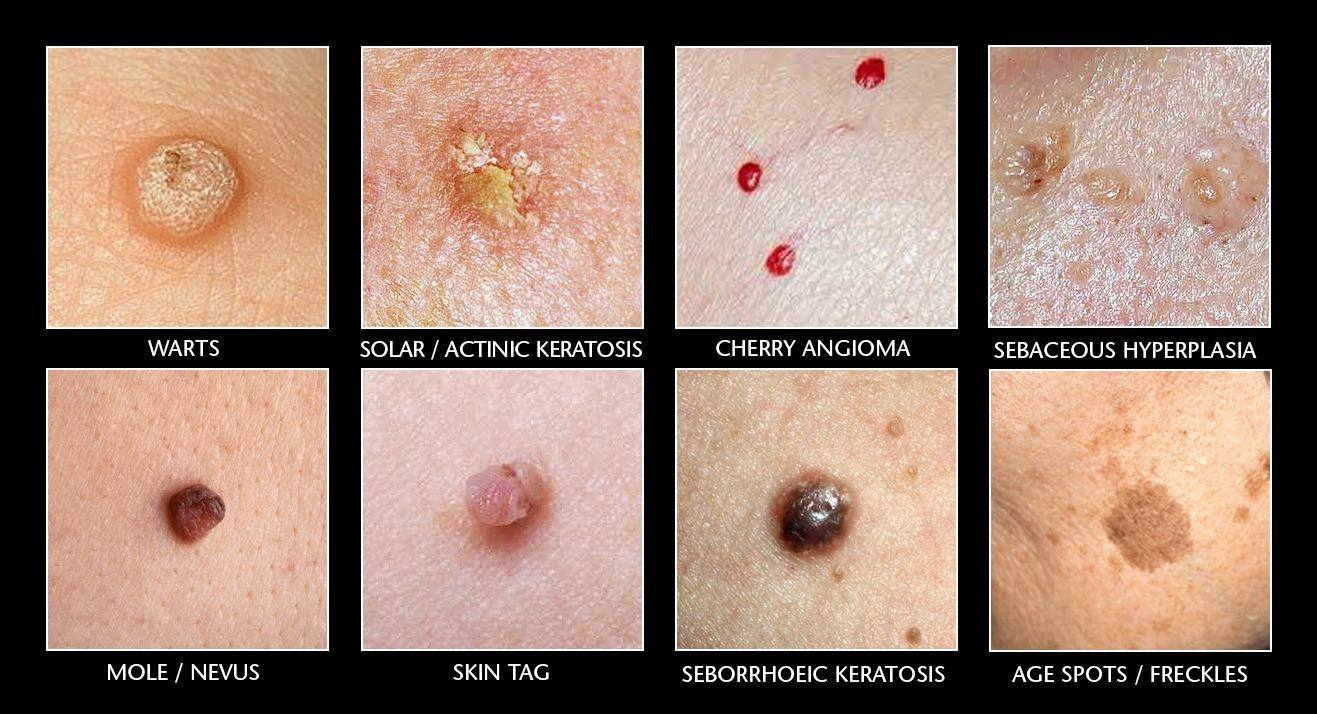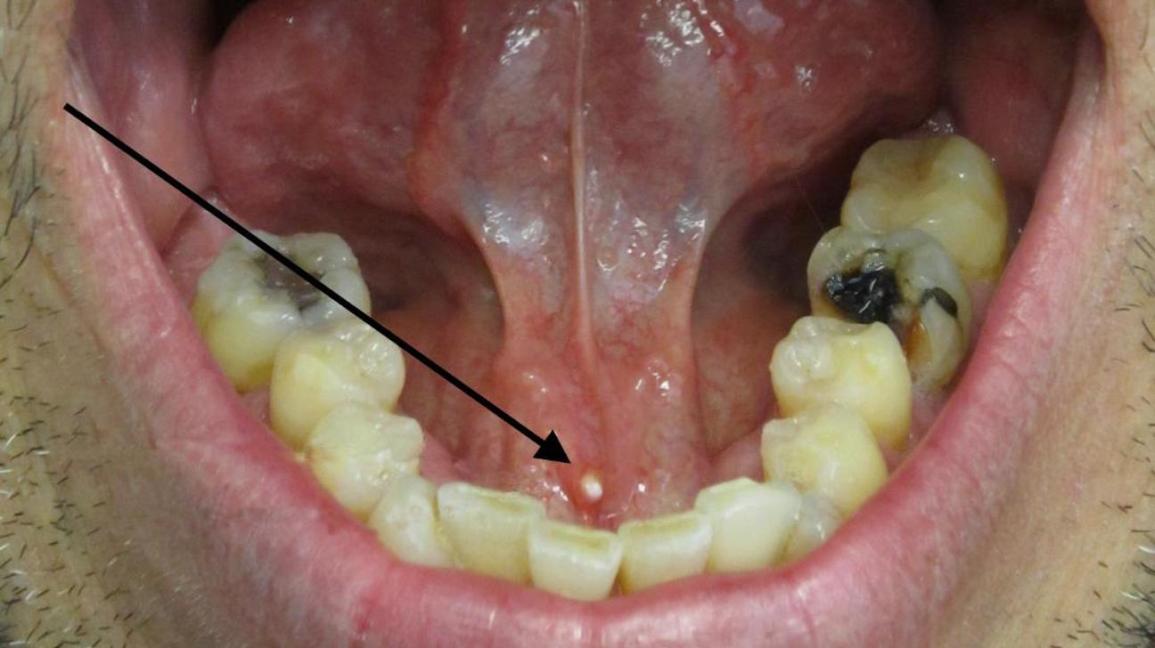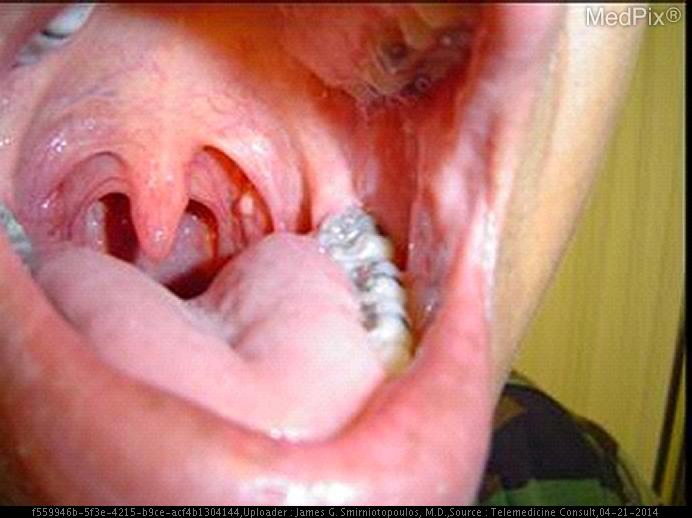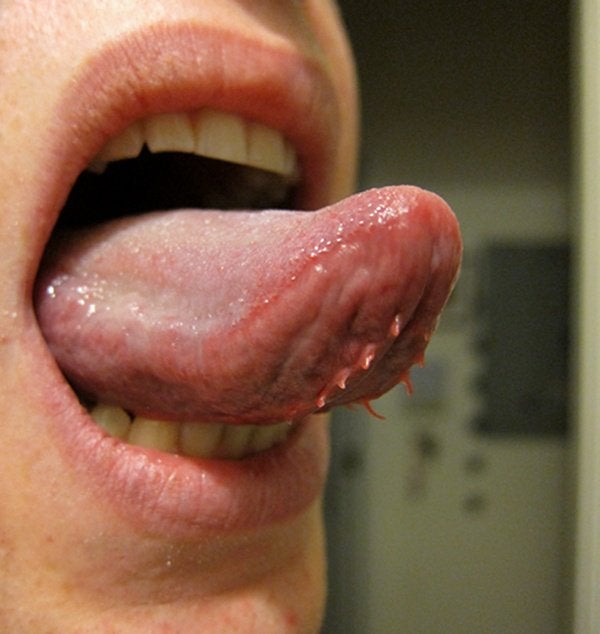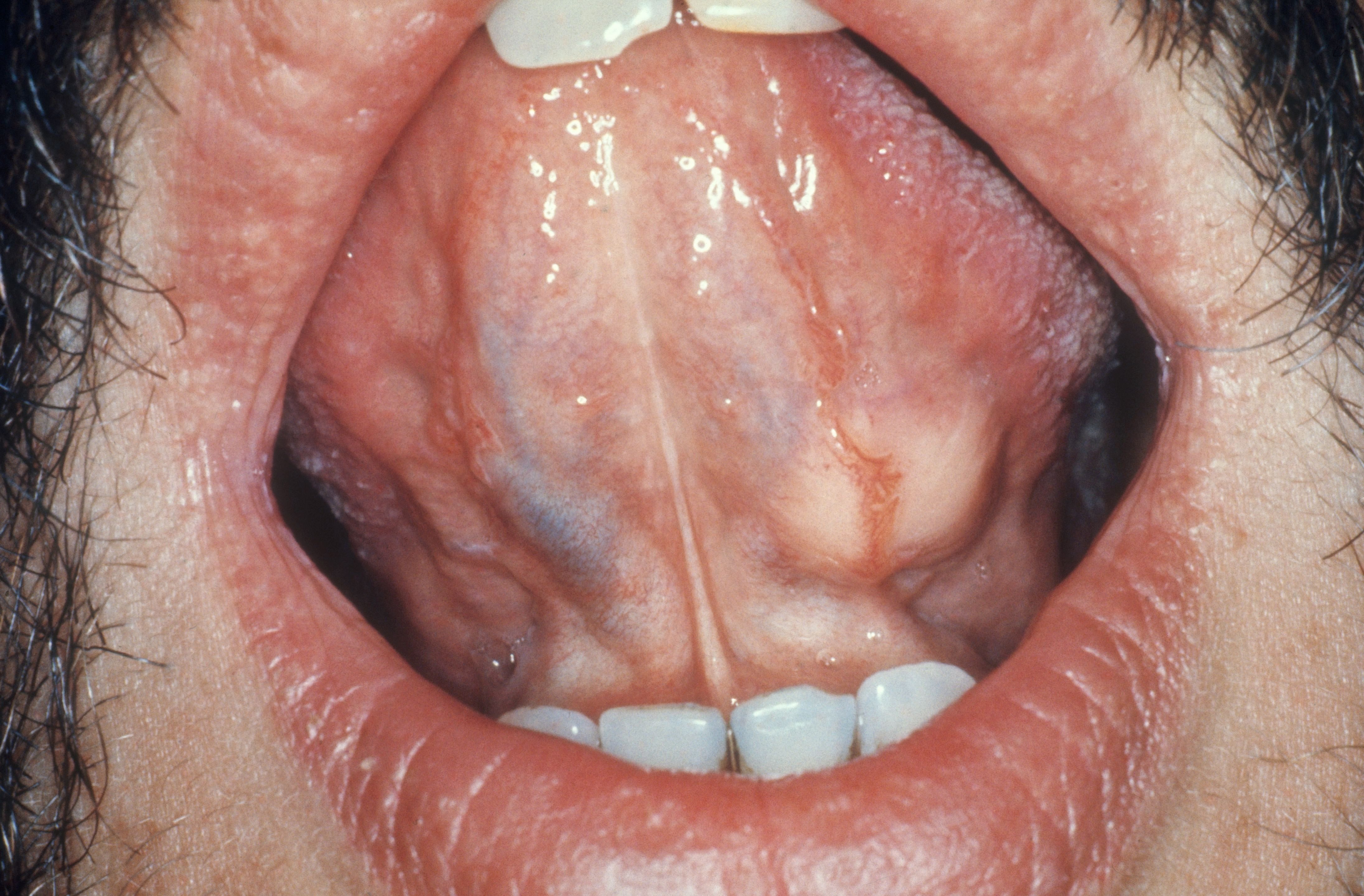Do You have a Skin Tag Under Your Tongue, Plica Fimbriata?
What does a a skin tag under your tongue mean? Skin tags are normal and noncancerous skin growth. However, you could also mislabel a skin growth as a skin tag, but it could be something else, especially if it grew in an unlikely place.
Author:Katharine TateReviewer:Karan EmeryOct 06, 202337.1K Shares508.4K Views
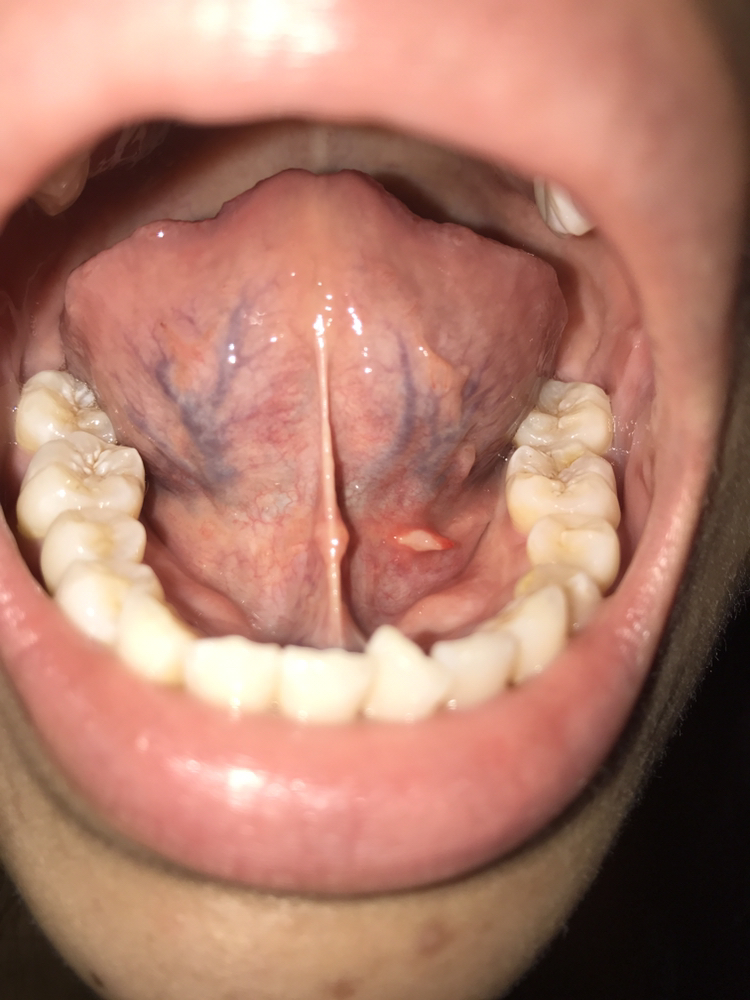
You may notice that there are bumps growing on some part of your body.
If that skin growth looks like a small piece of soft skin that hangs by a stalk, then that's most probably skin tags.
Skin tags are usually harmless.
However, it could also be an annoying skin problem when it grows in a location where it meets constant irritation.
Skin tags are small and tender skin growths that could be found in various parts of the body.
Skin Tags Facts
Skin tags consist of a core of fiber and ducts. It also has nerve cells and fat cells in it and is covered with the epidermis.
Some people may have skin tags, but they would not notice it unless they accidentally scratched or rubbed them.
There were reports about people accidentally rubbing their skin tags off painlessly.
But others got unlucky and scratched their skin tags resulting in bleeding and infection.
There's nothing to worry about skin tags as long as they are left alone if they don't cause any inconvenience.
Skin tags are not contagious, but it is hereditary.
You can get it from your parents if they happen to experience the same skin growth.
You have nothing to worry about if you accidentally removed a skin tag or are planning for its removal.
There is a small chance of growing it back, but it will not multiply to more skin tags if removed.
That's a common myth that people often believe.
If you wish to remove them, procedures such as cauterization, cryosurgery, litigation, and excisionwill fix the problem.
Removing small tags can be done all by yourself.
There are techniques such as tying them with floss that could make them fall off.
Just remember the health risks that come along when doing it.
Where Do Skin Tags Usually Grow?
Skin tags commonly grow in the eyelids, neck, underarms, upper chest, buttock folds, groin folds, and under the breasts.
If you could notice, its growth is usually in the outer part of the body.
If you happen to notice that there are bumps that look like skin tags in your vulva, inside of your mouth, and other moist places, it's most likely not a skin tag.
Skin tags grow on places where skins constantly rub with one another.
This is why people who are overweight tend to have skin tags.
Their skin creases or folds create friction when the skins touch each other.
Another factor for the existence of skin tags is the high level of hormones.
This is why pregnant women and people who suffer from insulin resistance are prone to have skin tags.
But in general, there is still no concrete evidence as to why skin tags grow in those places and why these certain people have more chances of having some.
But there is nothing much to worry about its existence as long as it's left alone unbothered.
What Is The Difference Between Skin Tags And Other Skin Growths?
Skin tags are often confused with other skin growths like moles and warts.
Skin tags are small flaps of tissue that can be seen hanging off the skin by a connecting stalk.
Again, they are benign, so they are not dangerous.
Moles, on the other hand, are skin growths that are usually brown or black.
They also appear anywhere on the skin, maybe just one or in groups.
Most moles are also normal and do not pose any health threats.
Another skin growth is warts.
Warts are lesions or bumps that are flat or sometimes slightly raised from the skin.
They feel rough or bumpy and resemble a cauliflower.
Warts are mostly caused by HPV or Human Papillomavirus.
Another one is cysts.
Cysts are a sac-like pocket of membranous tissue that could contain fluid, air, or other substances.
They could also grow anywhere in the body and are benign or noncancerous.
Other skin growths, especially those bumps that are located inside the mouth, is most probably not a skin tag.
It could be warts, cysts, or other causes.
Skin Tags Under The Tongue?
Here's a rule with skin tags, they do not typically grow on moist, mucosal surfaces.
They usually grow in the dry region of the body.
So, what if you feel like something that looks like a skin tag is hanging under your tongue?
Well, there are a lot of possibilities on what that might be.
It could be another skin growth that might be similar to the structure of a skin tag.
If you feel like you have one under your tongue, it is best to consult your doctor to have it checked.
But on the other hand, there's also this part of our tongue that closely resembles a skin tag.
It is known as the fimbriated fold of the tongue, or the plica Fimbriata.
The fimbriated fold that is located under the tongue resembles a skin tag as it appears to be an excess tissue.
The fimbriated fold hangs under the tongue, just like how skin tags hang off the skin.
Some people develop more or less 1cm long flaps of skin, and they appear in pairs.
They are located on each side of the frenulum, which is a tissue that connects the bottom of the tongue to the inside of the mouth.
They may even appear up to 4 or more sets.
Some people have them closer to the tip of their tongue, which makes it more obvious, while some have it very small or just a bump.
Fimbriated folds are always confused with skin tags because of their appearance.
However, both of them are harmless and do not indicate any serious complications.
Although it is normal to have it, it may also cause a lot of discomfort and insecurity, just like skin tags.
But some also consider it as an aesthetic asset because it is different and looks unique.
Plica Fimbriata sometimes gets caught in the teeth.
And if the bumps happen to accidentally come off, it could lead to an open sore that will be susceptible to infection.
If your plica Fimbriata starts to swell, have pain, redness, and oozing, then it is best to visit your doctor to have it checked.
They would most likely prescribe antibiotics and an antiseptic mouthwash to keep the area of your plica Fimbriata clean.
If you would like them to be intentionally removed, you could have your dentist remove them for you.
If It's Not A Skin Tag Under Your Tongue, What Could It Be?
Since there are a lot of skin growths that could develop in our body, it is not impossible that we get confused about which is which.
Skin tags are common, the same with moles, cysts, and warts.
But keep in mind that skin tags will not grow in moist areas such as inside of your mouth.
So, if you happen to feel one inside, it could be a cyst or an area of extra tissue.
The bumps that you feel under your tongue may appear naturally with no apparent reason.
But those bumps may also come from the presence of an infection.
But nevertheless, those skin growths under your tongue are commonly harmless.
Some of the possible causes of the bumps under your tongue are canker sores, oral mucous cyst, human papillomavirus, lymphoepithelial cyst, sialolithiasis, plica Fimbriata, and salivary gland tumor.
What Is A Sialolithiasis?
Sialolithiasis is also known as salivary stones.
This is a condition wherein there are crystalized minerals that appear as a stone that form in the ducts of the salivary glands.
This is known as the most common cause of salivary swelling.
If there are not enough fluids, the saliva becomes more concentrated, and not eating enough causes reduction in the production of saliva.
These form the salivary duct stones.
If the stone forms in the sublingual gland, which is located underneath the tongue, it will cause a sore and painful bump.
This could lead to more discomfort since it will be painful every time a person eats. It could also cause pain and swelling below the jaw and a dry mouth.
Lastly, there could be an infection in or near proximity of the affected gland.
If the stone is very close to the gland or stuck inside the gland and is already big, you can choose to remove it through surgery.
The doctor could also just give you a prescription of anti-inflammatory drugs.
But there are also things you can try to remove yourself, especially if it is still small.
To remove the stone, you have to increase your saliva production.
To do so, you can start sucking a lemon, drink plenty of water, and gently massage the area around the stone using a blunt object.
Even though salivary stone could be very painful, it does not indicate any serious problems or disease.
What Is A Lymphoepithelial Cyst?
A lymphoepithelial cyst may sound scary, but they are noncancerous.
They are slow-growing unilocular or multilocular lesions that develop in the salivary glands. The lymphoepithelial cyst is also known as the branchial cyst.
But even though this cyst alone is benign, they often occur as a symptom of HIV infection, which is a big problem in the long run.
Lymphoepithelial cysts are small, firm nodules that are located below the mucus membrane, which lines the inside of the mouth.
They appear under the tongue or on the floor of the mouth as flesh-colored, white, or yellow bumps.
This kind of cyst is mostly painless and can be up to 1 centimeter wide.
Benign Lymphoepithelial cysts can be treated through repeated fine-needle aspiration and drainage, surgery, radiotherapy, sclerotherapy, and conservative therapy.
These are instituted with highly active antiretroviral therapy medication.
What Is Plica Fimbriata?
As previously mentioned, Plica Fimbriata is small fringes that are made of mucous membrane underside of the tongue.
They are located parallel in position to either side of the lingual frenulum.
The small fringes can grow out delicate extensions that look similar to a skin tag. And just like skin tags, Plica Fimbriata is normal and benign.
They are tagged as extra tissue that was not completely absorbed by the body during the development and growth of the tongue.
What Is Salivary Gland Tumor?
Salivary gland tumors are growths of abnormal cells that begin in the salivary gland.
They form in the sublingual gland, which could result in a lump or swelling under the tongue or near the jaw.
This tumor is caused by dehydration, smoking, and exposure to radiation.
Most of the salivary tumors are benign.
They may disappear even without any treatment.
But if the tumor develops in the smaller salivary gland, there are high chances that it is malignant.
70-90% of sublingual gland tumors are malignant.
This means that the tumor will grow rapidly and will spread to the other parts of the body.
Salivary gland tumors could be very painful. It could also cause numbness or muscle weakness in some parts of the face.
The person having this may experience difficulty in opening their mouth or swallowing.
There could also be fluid draining from the ear.
It is recommended to have the tumor removed through surgery.
The doctor will remove not only the tumor but also the other surrounding tissues.
If they happen to identify cancer cells, they may suggest that you undergo radiation therapy.
When To Consult A Doctor?
Although the given possible causes for the bumps in your tongue are mostly noncancerous, it is still best to visit your doctor and have them diagnosed.
This is important, especially if you happen to experience several symptoms that are causing a lot of inconveniences.
Examples of the symptoms that you might have are changes in the bumps' size, texture, and color.
You could also experience throbbing pain in your mouth that doesn't easily go away.
There could be an open wound in your mouth that won't heal. Your mouth might also have red and white patches, numbness, and throat pain or tightness.
Other symptoms include voice changes, unexplained weight loss, trouble chewing and swallowing, and problems moving your jaw and tongue.
These symptoms are maybe indications of a minor condition such as the above-mentioned causes of the bumps.
However, in rare cases, they could also be an early sign of a more serious condition such as oral cancer.

Katharine Tate
Author

Karan Emery
Reviewer
Latest Articles
Popular Articles
